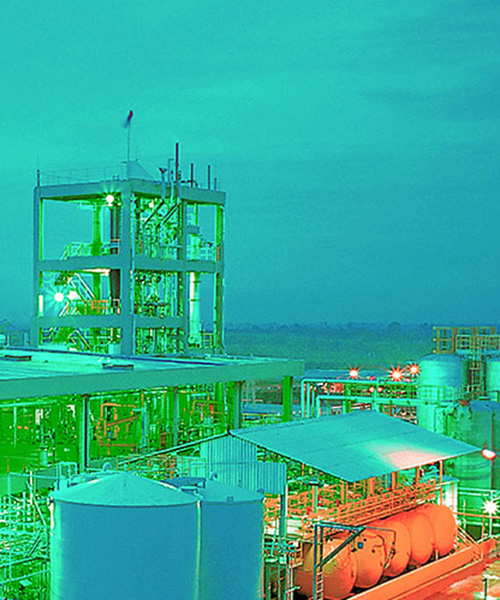May 29, 2024 • 5 min read
Cathode manufacturing: Solutions for sodium sulphate
The world needs more batteries. But producing battery materials leads to an unwanted byproduct: sodium sulphate.
“Producing sodium sulphate is a significant barrier to entry in the battery materials industry,” says Mervyn Stevens, Vice President – Mineral Processing and Battery Materials.
“It’s a growing byproduct of cathode manufacturing. In the past, producers would dispose of much smaller volumes of sodium sulphate, or use small volumes as a low cost input in other products such as household cleaners, detergents and even shampoo.
“However, the current batteries boom has brought about an unforeseen surge in the volume of sodium sulphate production, at a time when more stringent environmental regulations are ensuring producers dispose of it in a more responsible manner,” continues Stevens.
“For every ton of cathode material produced, whether it’s nickel-manganese-cobalt (NMC) or lithium-iron-phosphate (LFP), you produce up to two tons of sodium sulphate,” says Stevens. “And by producing batteries at much higher quantities, we risk creating a significant environmental issue from this byproduct, impacting the social license to operate of cathode manufacturing plants.”
So, how do we engineer ourselves out of this sodium sulphate conundrum?
Where sodium sulphate comes from
There are four existing processes in the battery materials industry that produce sodium sulphate as a byproduct.
“The first of these processes is lithium salt production, specifically the acid route,” says Stevens. “This includes the conversion of spodumene into lithium salt, whether it’s carbonate or hydroxide. Lithium concentrate is converted or leached using sulfuric acid, and you end up with a sulphate stream that generally comes out as a sodium sulphate byproduct.
“The second is producing iron phosphate. This is used in lithium iron phosphate; a process widely used in the production of lithium iron phosphate cathode material.
“Thirdly, when producing nickel manganese cobalt (NMC) batteries, sulphates come in as metal sulphates to form the precursor,” explains Stevens. “In the precursor plant, the metals sulphates are coprecipitated as a metal hydroxide complex and the sodium combines with the sulphates to form sodium sulphate.
“And lastly, black mass recycling. Battery materials can be recycled by treating the shredded batteries in a recovery process. This shredded battery material is referred to as black mass. This is often treated with sulphuric acid to return metals to sulphate salts, which results in the production of sodium sulphate as a byproduct.
“If sulphates are not introduced to the process, they won’t be produced as waste,” he says.
For producers with existing plants, removing or valorizing sodium sulphate from one or all streams is a top priority. What options do they have?
Solutions for brownfield battery materials plants to manage sodium sulphate
In its current form, sodium sulphate has little mainstream value. It’s still used as fillers in some detergents and washing powders. But demand is low compared to the high volume of sodium sulphate that is – and will be – produced in the coming decades.
“We’re now seeing license to operate being withdrawn from cathode production facilities that don’t safely or sustainably dispose of sodium sulphate waste.
“This means for cathode active materials producers that already create it as part of their processes, they’ll need to find an alternative way to add value and reuse it,” says Stevens.
Sodium sulphate contains valuable elements that can be reused. Stevens describes some of these options.
“The first of these is salt splitting. This takes sodium sulphate through a process to produce sulfuric acid and sodium hydroxide, both of which are valuable reagents used in the battery process.
“It’s energy intensive. However, with access to cheap and available energy – and provided the purity of the sodium sulphate is controlled – it is indefinitely reusable and fed back into the circularity of the battery material process,” says Stevens.
Another option is to produce sulphate-based fertilizers.
![]()
Current technologies allow producers to take sodium sulphate waste streams from the battery materials process to produce potassium sulphate or ammonium sulphate, and with a low value salt byproduct.
“Water soluble potassium sulphate is a widely accepted fertilizer and can be used to produce highly valuable ammonium sulphate. Its affordability as a produced fertilizer versus mined fertilizers means it's quite attractive. And from an energy intensity point of view, this approach is far more efficient than salt splitting.
“A further by-product from this approach has a low commercial value as sodium chloride, also known as salt or common salt. The kind you’d find on a dinner table,” explains Stevens. “Using Worley Chemetics’ capability for reuse in the battery materials process there can be valorization of this byproduct to be returned to the process as reagents.”
Other solutions for managing excess sodium sulphate
As Stevens explains, other solutions cathode material producers can explore include a combination of salt splitting and fertilizer production.
“An alternative is to use some version of salt splitting, and some version of potassium sulphate or ammonium sulphate production.
“Here, we can balance out the amount of fertilizer that gets produced so it doesn't overflow the market, but also produce enough sodium hydroxide, hydrochloric acid and sulfuric acid to be consumed by the battery materials plant; a circularity that works quite well in NMC cathode production.”
Eliminating sodium sulphate from new cathode production plants
There’s also a lot of focus on alternative processes. For example, for lithium spodumene conversion, there’s an alternative that avoids the acid route and doesn't introduce any sulphates into the process.
“For lithium production, the alternative is to avoid acid in the conversion or leaching of spodumene. There is currently a caustic process that prevents the production of sodium sulphate altogether,” he says.
Alternatives also apply to make cathode material.
“This can be applied to both lithium-ion phosphates cathodes, and other cathode chemistries. And in the instance of iron phosphate for lithium iron phosphate, there are already processes that avoid the production of sodium sulphate without needing hydrochloric acid, sulphuric acid, or sodium hydroxide.
“This eliminates sodium sulphate waste streams entirely,” says Stevens.
“All operators should be looking at these alternatives, particularly for greenfield production facilities,” continues Stevens. “Avoiding sodium sulphate altogether, and effectively producing no waste streams, is a goal we share with our customers.
“However, through these recycling processes, it’s still important to address other emissions such as off gases, while keeping energy costs down, so these processes don’t overtake the economic and environmental value of not producing sodium sulphate in the first place.”
Harnessing new technology to eliminate sodium sulphate
“The industry must also look to accelerate the development and deployment of a new generation of battery cathode material plants.
“We’ve partnered with Nano One, a technology company with patented processes for the sustainable production of lithium-ion battery cathode active materials,” continues Stevens.
“The process makes high quality cathode materials with a significantly lower environmental impact and physical footprint than incumbent processes. It eliminates wastewater and the sodium sulphate waste stream, a major challenge in current cathode material production processes.”
Proactivity is the key to social license for cathode material producers
No matter what alternative processes emerge in the future, there’s currently a large installed base of cathode production processes that produce sodium sulphate as a byproduct.
“Without a planned solution to remove or reuse sodium sulphate from cathode production processes, producers may become stuck in a funding cycle with investors hesitant to put their capital at risk to develop facilities,” says Stevens. “Especially, if they don’t have an environmentally responsible plan for handling sodium sulphate.
“The ability to deliver a solution to sodium sulphate waste could be faster than a short term permitting process to continue traditional disposal. Knowing what you’re going to do with sodium sulphate and the process you’re going to choose needs to be done up front, in advance, and be well documented with experienced partners.”




